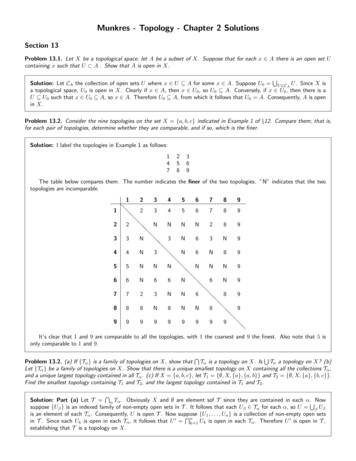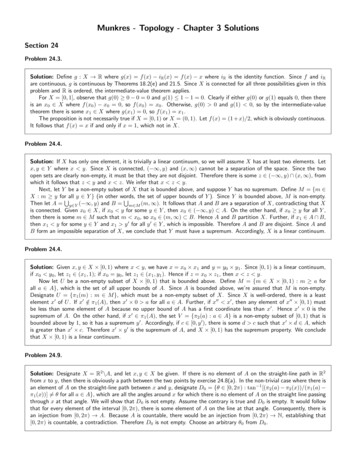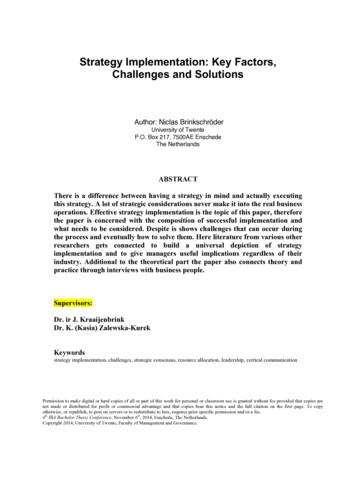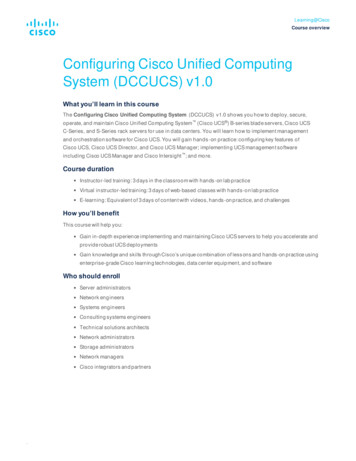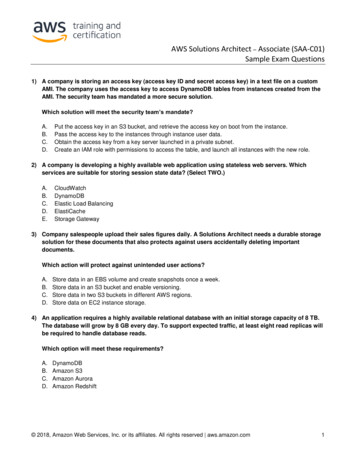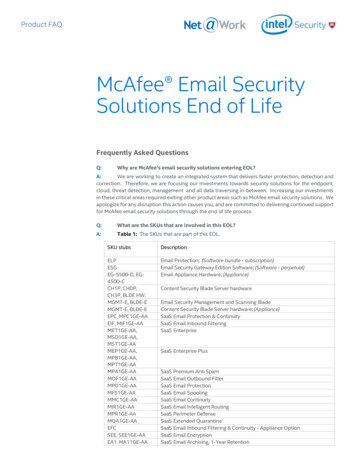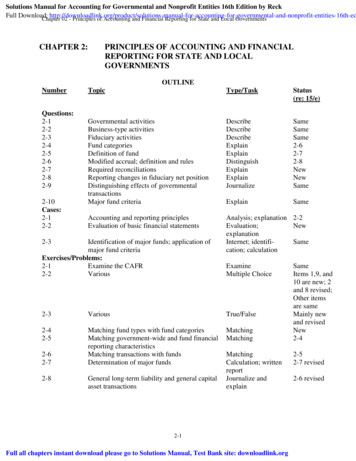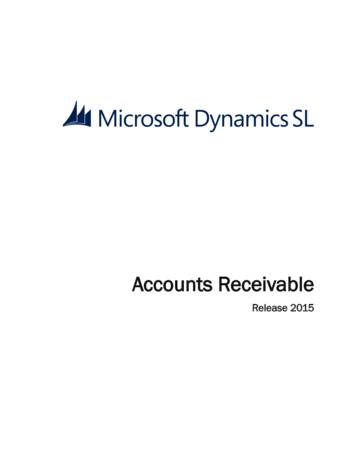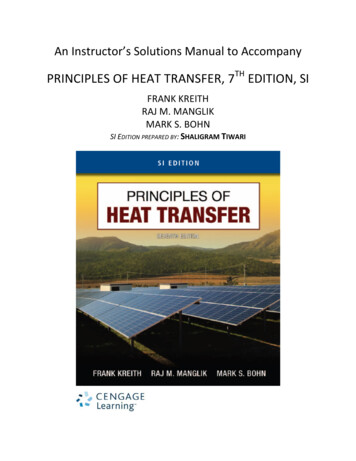
Transcription
Munkres SolutionsAmit RajaramanLast updated March 31, 2021Contents2 Topological Spaces and Continuous2.13 Basis for a Topology . . . . . . . .2.16 The Subspace Topology . . . . . .2.17 Closed Sets and Limit Points . . .2.18 Continuous Functions . . . . . . .2.19 The Product Topology . . . . . . .2.20 The Metric Topology . . . . . . . .2.21 The Metric Topology (continued) .2.22 The Quotient Topology . . . . . .Functions. . . . . . . . . . . . . . . . . . . . . . . . . . . . . . . . . . . . . . . . . . . . . . . . .3 Connectedness and Compactness3.23 Connected Spaces . . . . . . . . . . . .3.24 Connected Subspaces of the Real Line3.25 Components and Local Connectedness3.26 Compact Spaces . . . . . . . . . . . .222355678.9. 9. 10. 10. 104 Countability and Separation Axioms124.30 The Countability Axioms . . . . . . . . . . . . . . . . . . . . . . . . . . . . . . . . . . . . . . . . . . . 12
Munkres Solutions2 / 13Amit Rajaraman§2. Topological Spaces and Continuous Functions2.13. Basis for a TopologyExercise 2.13.1. Let X be a topological space and A X. Suppose that for each x A, there is an open set Ucontaining x such that U A. Show that A is open in X.SolutionFor each x A, denote by Ux an open subset of A that contains A. Then A union of open sets is open and thus, so is A.Sx AUx . However, an arbitraryExercise 2.13.5. Show that if A is a basis for a topology on X, the topology generated by A equals the intersectionof all topologies that contain A. Prove the same if A is a subbasis.SolutionSLet T be the topology generated by A and T 0 be a topology that contains A. Let U T . Then U i I Bifor some (Bi )i I in A. However, each Bi is also in T 0 . Since an arbitrary union of open sets is open, U T 0 aswell. Therefore, T T 0 , proving the result. The solution for the case where A is a subbasis is very similar andso omitted.2.16. The Subspace TopologyExercise 2.16.1. Show that if Y is a subspace of X and A is a subset of Y , then the topology A inherits as asubspace of Y is the same as the topology it inherits as a subspace of X.SolutionThe topology A inherits as a subspace of X isT {U A : U open in X} {(U Y ) A : U open in X} {V A : V open in Y },which is the topology it inherits as a subspace of Y .Exercise 2.16.2. If T and T 0 are topologies on X and T 0 is strictly finer than T , what can you say about thecorresponding subspace topologies on the subset Y of X.SolutionIt is easily seen that TY0 is finer than TY . We further see that it need not be strictly finer by considering theexample X {a, b, c}, Y {a, b}, T { , X, {a}, {b}, {a, b}}, and T 0 as the discrete topology on X.Exercise 2.16.3. Consider Y [ 1, 1] as a subspace of R. Which of the following is open in Y ? Which are openin R? 1A x: x 12 1B x: x 12 1C x: x 12 1D x: x 12 E x : 0 x 1 and 1/x 6 Z
Munkres Solutions3 / 13Amit RajaramanSolutionA and B are open in Y and only A is open in R. This is reasonably straightforward to prove.C is not open in Y (and so not R either) because there is no basis element U of the order topology such that1/2 U C. A similar argument holds for D as well.E is open in both R and Y because it can be written as a union of basis elements \ 11E ,.n 1 n n ZExercise 2.16.4. A map f : X Y is said to be an open map if for every open U of X, f (U ) is open in Y . Showthat π1 : X Y X and π2 : X Y Y are open.SolutionWe shall only show that π1 is open, the other case is nearly identical. Let[U Ui Vii Ibe open in X Y for some indexing set I, where each Ui and Vi are open in X and Y respectively. Then,